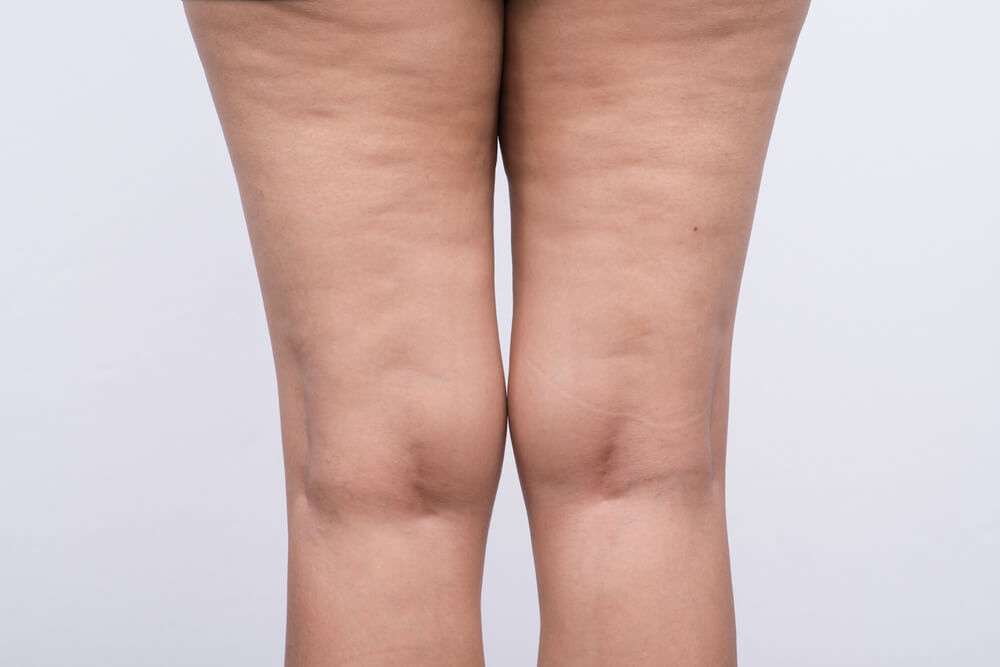Cellulite, the dreaded dimpled skin appearance that affects many people, is often found on the legs. While it’s a common cosmetic concern, many people are unaware of what causes cellulite and how it develops. In this blog post, we will explore the causes of cellulite in the legs and discuss risk factors, prevention, and treatment options.
Anatomy of Cellulite
To understand cellulite, it’s important to know the structure of our skin and connective tissue. Our skin is made up of several layers, with fat cells located beneath the surface. When these fat cells push against the connective tissue, it creates the dimpled appearance known as cellulite.
Causes of Cellulite in the Legs
Several factors contribute to the development of cellulite on legs:
- Genetics: Your family history, skin thickness, and elasticity, as well as the distribution of fat cells in your body, can all play a role in your predisposition to cellulite.
- Hormonal Factors: Estrogen is a hormone that can influence cellulite development. Hormonal fluctuations during menstruation, pregnancy, and menopause can also contribute to cellulite formation.
- Lifestyle Factors: Your diet, hydration levels, exercise habits, and smoking can all impact cellulite development. Consuming a diet high in fat and sugar, being dehydrated, leading a sedentary lifestyle, and smoking can all exacerbate cellulite.
- Weight and Body Composition: The distribution of body fat, muscle tone, and definition, as well as weight fluctuations, can all influence cellulite appearance.
Risk Factors for Developing Cellulite
Certain factors can increase your risk of developing cellulite in the legs:
- Age: As you age, your skin loses elasticity, making cellulite more likely to appear.
- Gender: Women are more prone to cellulite due to differences in fat distribution, connective tissue structure, and hormonal balance.
- Ethnicity: Some studies suggest that cellulite is more common in certain ethnic groups.
- Sedentary Lifestyle: A lack of physical activity can contribute to cellulite development.
Prevention and Treatment of Cellulite
While there is no guaranteed way to completely prevent cellulite, adopting a healthy lifestyle can help reduce its appearance:
- Healthy Diet and Hydration: Focus on a balanced diet rich in fruits, vegetables, lean proteins, and whole grains. Stay well-hydrated to help maintain skin elasticity.
- Regular Exercise: Engage in regular physical activity to maintain a healthy weight, improve muscle tone, and boost circulation.
- Massage and Lymphatic Drainage Techniques: These methods can help improve circulation and reduce fluid retention, which may help minimize cellulite.
- Topical Creams and Treatments: Some creams and treatments claim to reduce cellulite appearance by tightening the skin and improving its texture.
Conclusion
In conclusion, cellulite is a common and natural occurrence that affects a significant percentage of the population, particularly women. It appears as dimpled or lumpy skin on the legs and other areas due to the interaction between fat deposits, connective tissue, and the skin’s structure. Factors such as genetics, hormones, age, and lifestyle choices contribute to the development and visibility of cellulite. While it is primarily an aesthetic concern, it is essential to remember that cellulite is not a health risk and does not indicate poor physical fitness.
To manage and potentially reduce the appearance of cellulite, individuals can adopt a balanced diet, engage in regular physical activity, and maintain a healthy weight. However, it is important to keep realistic expectations and acknowledge that the complete elimination of cellulite may not be achievable for everyone.
